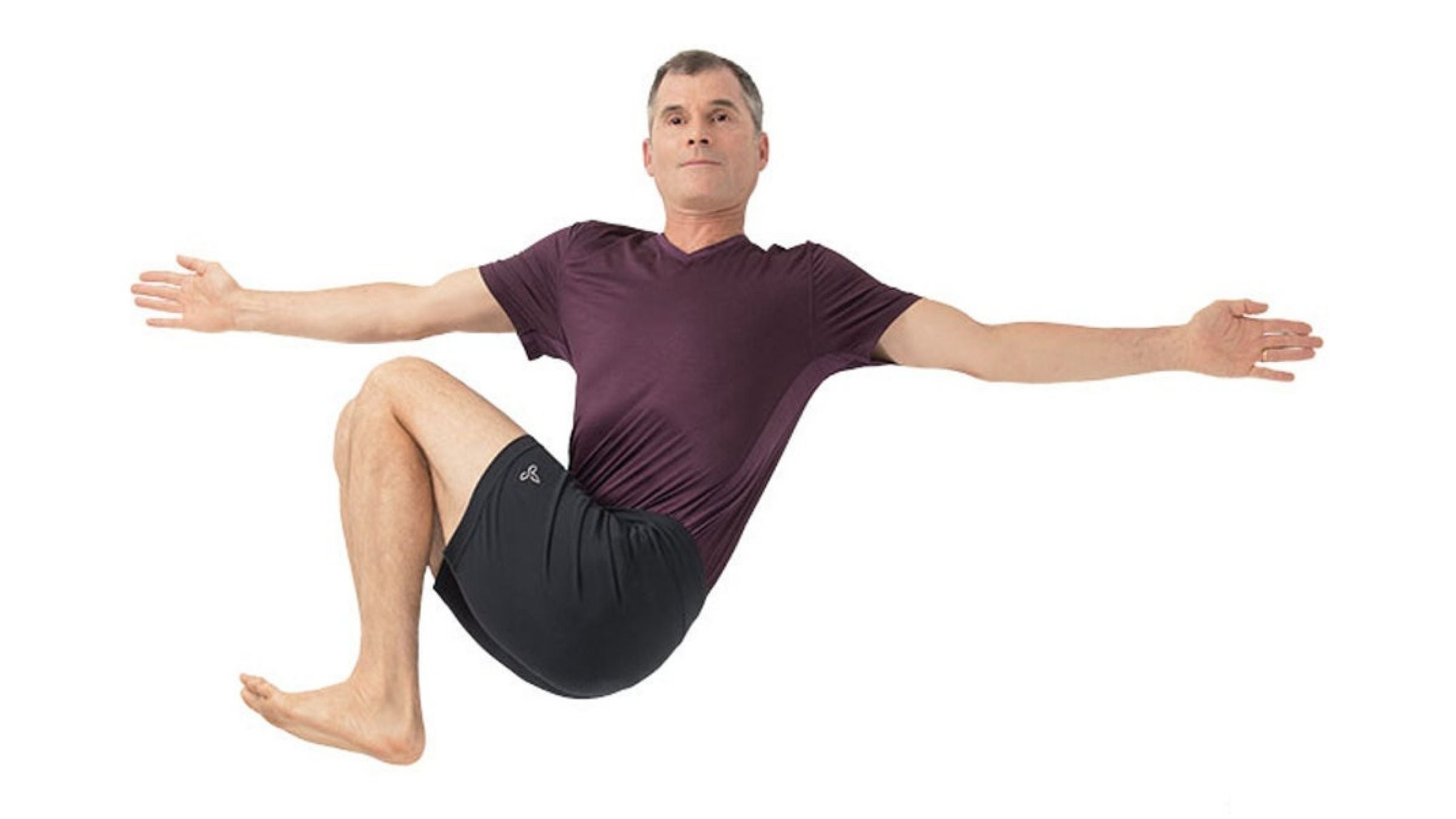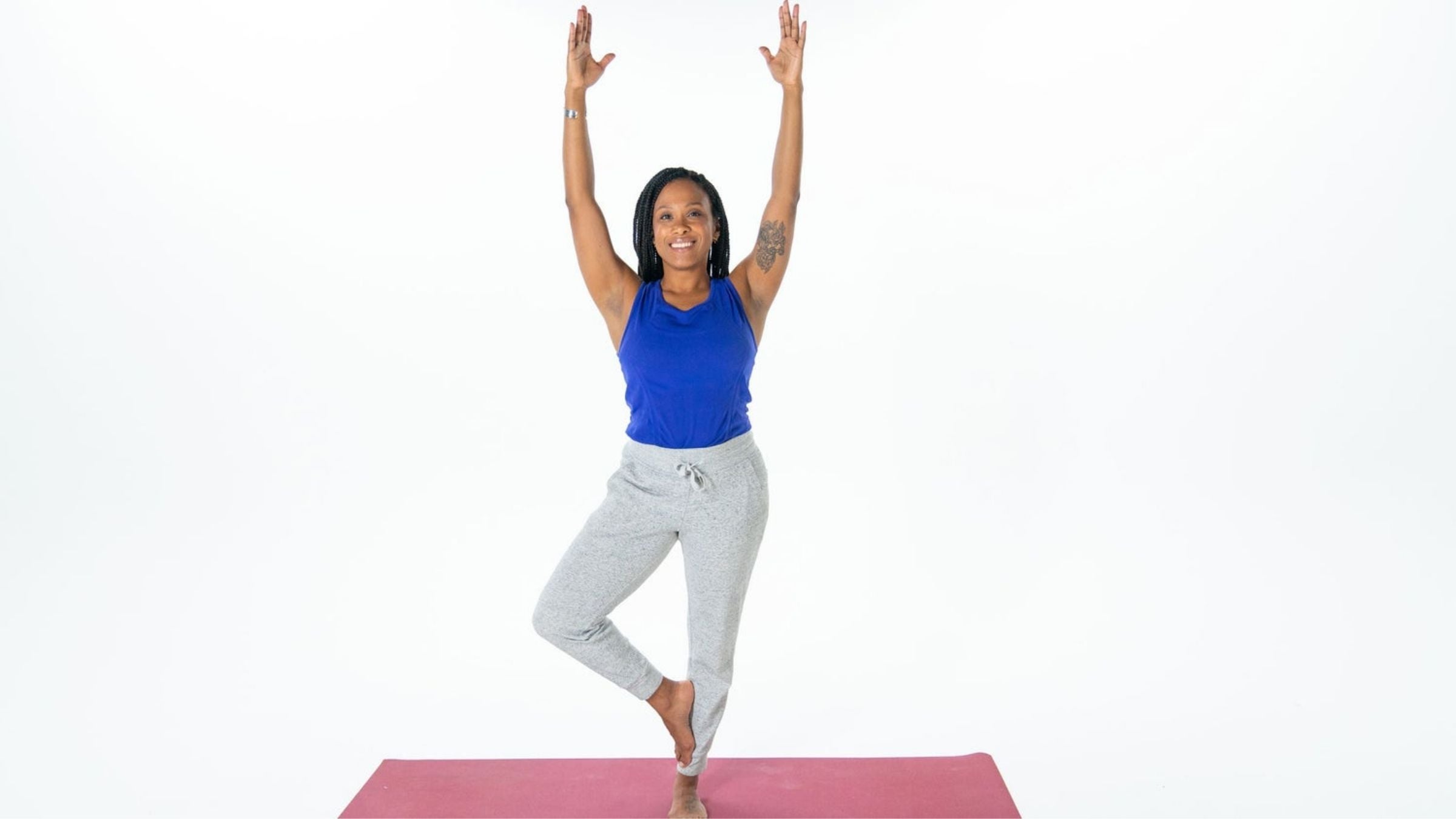[ad_1]
Triathletes have a long list of excuses for not incorporating yoga into their training routines: limited training time, it’s too hard, it’s too easy, and “I’m not flexible enough.” Sage Rountree, Ph.D., author of The Athlete’s Guide to Yoga and co-owner of Carolina Yoga Company in North Carolina, has heard them all. But Rountree, an endurance athlete herself, maintains that yoga has a compelling list of physical benefits, including building strength and increasing flexibility in a balanced way. “It’s not gratuitous flexibility but neither is it pure strength,” she said. “When we can find the right balance, the body is more capable of handling a greater training load and can be more resistant to injury.”
Yoga’s mental benefits can be just as important, said Abigail Smith, DPT, a sports-certified specialist in physical therapy and owner of Forward Motion Physical Therapy in Westport, Connecticut. “It’s easy for triathletes to say, ‘If I’m not covering miles, I’m not training,’” she said. “But there are some days you just need to slow down. There is something to be said about quieting your mind, about true yogi practice,” especially close to race day, said Smith, who prescribes yoga poses for her patients.
Whatever your preconceptions about yoga, the practice is suitable for any athlete, no matter their experience level, flexibility, or available training time. The following poses address each of the biggest trouble spots Smith identified in triathletes, and they can be made a part of a workout cool-down or bedtime routine—even if only 5–10 minutes. Rountree suggests holding each pose until the sensation starts to change, whether that’s at five neck circles or 20 breaths.
Section divider
SWIM
Section divider
Problem area: Neck range of motion
Muscles addressed:Sternocleidomastoid, scalene muscles
Yoga Pose 1: Seated Neck Rolls

How it helps: This helps build flexibility in both sides of your neck to allow for proper breathing to either side in the swim.
Do the move: Sit up tall then drop your right shoulder toward your right ear, then your chin toward your chest, then left ear toward left shoulder and so on in both directions.
Yoga Pose 2: Reclined Spinal Twist

How it helps: This twist offers a passive way to stretch through the neck to increase range of motion.
Do the move: Lie on your back, bend your left knee and hug it into your chest then pass it across your body until it’s resting on the ground on the right side of your body. Place your right hand on top of your left knee, then open up your chest by extending your left arm straight out to the left. Turn your head to look over your left hand. Repeat on the other side.
SWIM
Section divider
Problem area: Shoulder rotation and strength
Muscles addressed: Internal rotators of the shoulder, including subscapularis (a rotator cuff muscle)
Yoga Pose 1: Cow Face Pose (arms)

How it helps: When athletes lack internal rotation of their shoulder, it can affect their ability to swim certain strokes, especially a sighting stroke like breaststroke, and it can lead to a rotator cuff tear. The arms of this pose address both the internal rotation of your shoulder with one arm while increasing shoulder flexion with the opposite arm, Rountree said.
Do the move: From a seated position with a tall back, bend your right arm and lift it up, elbow pointing to the sky, trying to reach your right palm to touch between your shoulder blades or to your shirt collar. Take the left arm out to the side like in breaststroke, then—depending on your range of motion—place the back of your left hand on your hip, the small of your back or try to grasp your right hand. You can hold a workout band to close the gap as well. Repeat on the other side.
Yoga Pose 2: Elbow Plank

How it helps: Lack of strength in the shoulders can lead to pain when pulling on the swim, and this plank variation can build strength and stability in your shoulders and neck.
Do the move: Lie on your stomach then push into a plank position on your forearms, keeping shoulders stacked above elbows, a neutral back, and head and neck aligned with your back. This pose also builds core strength, which can help relieve lower back pain and stabilize the thoracic spine, both problem areas for the bike.
Section divider
BIKE
Section divider
Problem area: Lower back pain
Joints addressed:Lumbar vertebrae
Yoga Pose: Supported Child’s Pose (or Child’s Pose)

How it helps: Smith sees lower back and spine issues frequently in triathletes, and it usually stems from hours in aero combined with an improper bike setup. Left unaddressed, the pain can lead to either disc herniations or at least decreased power from inability to engage your hamstrings and glutes.
Do the move: Start from a kneeling position. Bring your big toes to touch and bring your knees to the edges of your yoga mat. Place a folded blanket or pillow under your stomach and between your legs, then fold forward to rest your body and head on the blanket, turning your head to one side. In traditional Child’s Pose, you’ll increase flexion of your spine by keeping your knees close together and just draping your belly down over your thighs, resting your forehead on the mat and stretching your arms toward the front of your mat.
BIKE
Section divider
Problem area: Thoracic spine
Joints addressed:Lumbar vertebrae
Yoga Pose: Threading the Needle

How it helps: Tightness through the thoracic spine, usually caused by an athlete’s aero setup, can be addressed with this classic twist.
Do the move: Start from a neutral tabletop position, with hips stacked over knees, shoulders stacked over wrists, neutral spine, and fingers pointing forward. Slide your right arm underneath your left arm with your palm up, then slowly lower your right shoulder, right ear, and cheek to rest on the mat. Keep your left elbow and hips raised. Unwind, return to Table, then repeat on the other side. To increase the intensity of the twist, you can rest the back of your non-threading hand on your lower back once you’re in the position.
Section divider
BIKE
Problem area: Tight hip rotators
Muscles addressed: External hip rotator muscles, including the gluteal muscles
Yoga Pose 1: Cow Face Forward Fold

How it helps: Tightness in the external hip rotators can come from lots of hill climbing and heavy gearing, and that tightness can cause decreased power.
Do the move: Bring your legs in front of you then bend them to stack one knee on top of the other (or as close as you can get!), keeping your feet flexed. Include the Cow Face arms, described above, if you’d like to work your shoulders at the same time. Fold forward over your knees for a deep hip rotator stretch.
Yoga Pose 2: Tree Pose

How it helps: This pose works to strengthen the hip rotators in both legs—the standing leg requires holding steady, and the bent leg requires hip rotators to stay out to the side.
Do the move: From a standing position, lift your right leg and press the sole of your right foot against the inside of your left thigh or calf (never the knee joint). Lift up in the knee cap of your standing leg and lengthen through the waist. You can raise your arms into a prayer pose, reach overhead, or hands on hips. Repeat on the opposite side.
Section divider
RUN
Section divider
Problem areas: Tight hamstrings and calves
Muscles addressed:Hamstring muscles (biceps femoris, semitendinosus, semimembranosus) and calf muscles
Yoga Pose: Downward Facing Dog

How it helps: Tight hamstrings and calves, which can be caused by overuse, too much too soon, or electrolyte imbalance, will decrease your speed on the run. Left untreated, tightness could turn into a muscle strain.
Do the move: Starting from your hands and knees with palms spread and toes curled under, lift your knees, hips, and sitting bones toward the ceiling. Keep your spine long, and stretch your heels toward the floor without locking your knees.
Section divider
RUN
Problem areas: Tight quads
Muscles addressed: Quadriceps
Yoga Pose 1: Low Lunge or Proposal Pose

How it helps: Tight quads can lead to runner’s knee or patellar tendinitis, and this classic move provides a deep stretch to quad muscles.
Do the move: Starting from your hands and knees, sweep your right foot forward underneath you, and position your foot between your hands. Stack your right knee above your ankle, and scoot your left knee backward until you feel the stretch. When you’re ready, lift up your chest, tuck your tailbone, and raise your arms overhead. Repeat on the other side. Rountree also likes a variation of this pose, Proposal Pose, in which you keep both knees at 90-degree angles and you include a slight backward tilt in the pelvis. Bonus: It can also stretch hip flexors.
Yoga Pose 2: Dancer’s Pose

How it helps: This yoga variation on the gym class quad stretch is helpful in building flexibility in the bent leg and strength and stability in the standing leg, including the quads, calves and hamstrings.
Do the move: Start from a standing position with feet together. Draw one leg in toward your chest while rooting down through your standing foot. Hold your foot and bring your bent knee down in line with your standing leg, then start to tilt forward. Use your other hand to help you flip the grip on your foot, then continue to lift the foot above your head while holding it with both hands and pointing your elbows toward the sky.
[ad_2]
Source link
